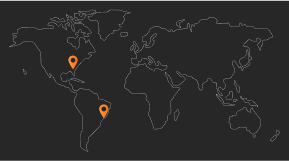The Value of Software Is Shifting from Code to Architecture and Innovation

For decades, the value of software was anchored in programming skills. Mastery of languages, frameworks, and libraries was the gravitational center of technical discussions and business decisions. However, this paradigm is undergoing a significant shift.
The arrival of generative artificial intelligence, capable of writing, reviewing, and refactoring code with precision and speed, is reshaping priorities in software development.
What was once considered the greatest asset, the source code, is now losing its prominence.
Today, the real competitive advantage is moving to higher layers: system architecture, clarity on the problems to be solved, and the ability to innovate with purpose.
The Obsolescence of Code as a Standalone Advantage
There is no doubt that code will continue to be necessary. It is, after all, the means by which logic is transformed into functionality. But when code production becomes accessible, abundant, and automatable, its ability to create exclusive advantage diminishes. Copying solutions has become trivial.
Refactoring structures is almost automatic. Rewriting entire blocks is a task AI can already perform in seconds. What used to be seen as the work of brilliant engineers is becoming a commodity.
Clinging to fragile legacies or insisting on foundations built without clear purpose has become more costly, not only from a technical perspective but a strategic one. The ability to start from scratch, with intention, clarity, and a strong grasp of the problem, is emerging as a more rational alternative.
The New Frontier of Competitive Advantage
If the value is no longer in the code, where is it now?
The answer lies in what precedes the writing: architecture, business understanding, product strategy, and innovation with context.
Well-crafted software does not arise from a mechanical combination of technical components, but from the connection between multiple dimensions: the real pain of the user, market constraints, business objectives, the sustainability of the solution, and the technical responsibility with which it is built.
Today, the differentiator lies in architecting systems that can withstand time and scale. In modeling domains intelligently. In anticipating future impacts. In choosing what not to build, with the same clarity as choosing what should be implemented now.
This kind of decision is not trivial. And it certainly cannot be delegated to AI.
Innovation with Intention: The New Source Code
The innovation that matters isn’t in the use of cutting-edge tools or trendy buzzwords. It lies in intention. In using technology as a means to solve something deeply. In designing solutions that fit precisely within the customer’s context. In avoiding the trap of “building for the sake of building.”
In this new scenario, serious software companies don’t sell code. They sell clarity, structure, planning, and future vision. Above all, they sell responsibility. They sell all of this so that your company doesn’t pay the price of missed opportunities.
Teams that design with excellence understand that today's architecture must anticipate tomorrow’s changes, not just in the system, but in the business. As code becomes automated, strategic thinking becomes more valuable.
The Role of Architecture as a Bridge Between Execution and Impact
Architecture is the space where technical thinking and product vision meet. It’s where scalability, sustainability, and resilience are defined. It’s not a purely technical exercise, it’s an intellectual, creative, and often philosophical one.
Choosing an architectural pattern is, in practice, choosing an evolutionary path. Modeling a domain is deciding how the business will be understood by both machines and the people who sustain it. Defining context boundaries is ultimately an act of responsibility, to the team, the users, and time.
When executed well, architecture doesn’t just reduce future errors. It guides growth. It gives coherence to the software and organizes complexity. It’s no coincidence that the most innovative companies have engineer-architects working side by side with product strategists and business stakeholders.
Conclusion
We are living through a moment of inflection. What will define the winners is no longer the ability to code quickly, but to think deeply. The new competitive edge lies not in knowing how to code, but in knowing why, for whom, and how to ensure it’s sustainable over time.
Code, while necessary, has become the least of our problems. It’s the clarity of the problem, the robustness of the architecture, and the originality of the solution that create real and lasting value.
Artificial intelligence may dominate execution. But intention, contextual insight, and accountability remain human. And that is where the true value of software lies in the era of continuous innovation.
